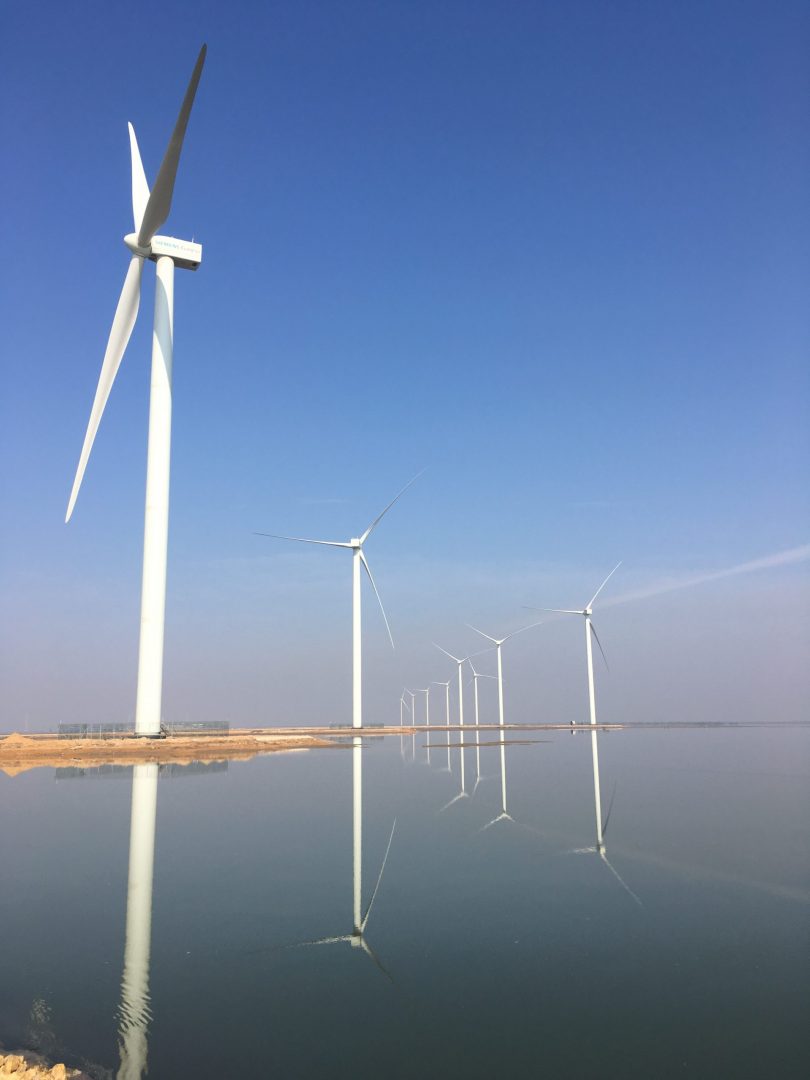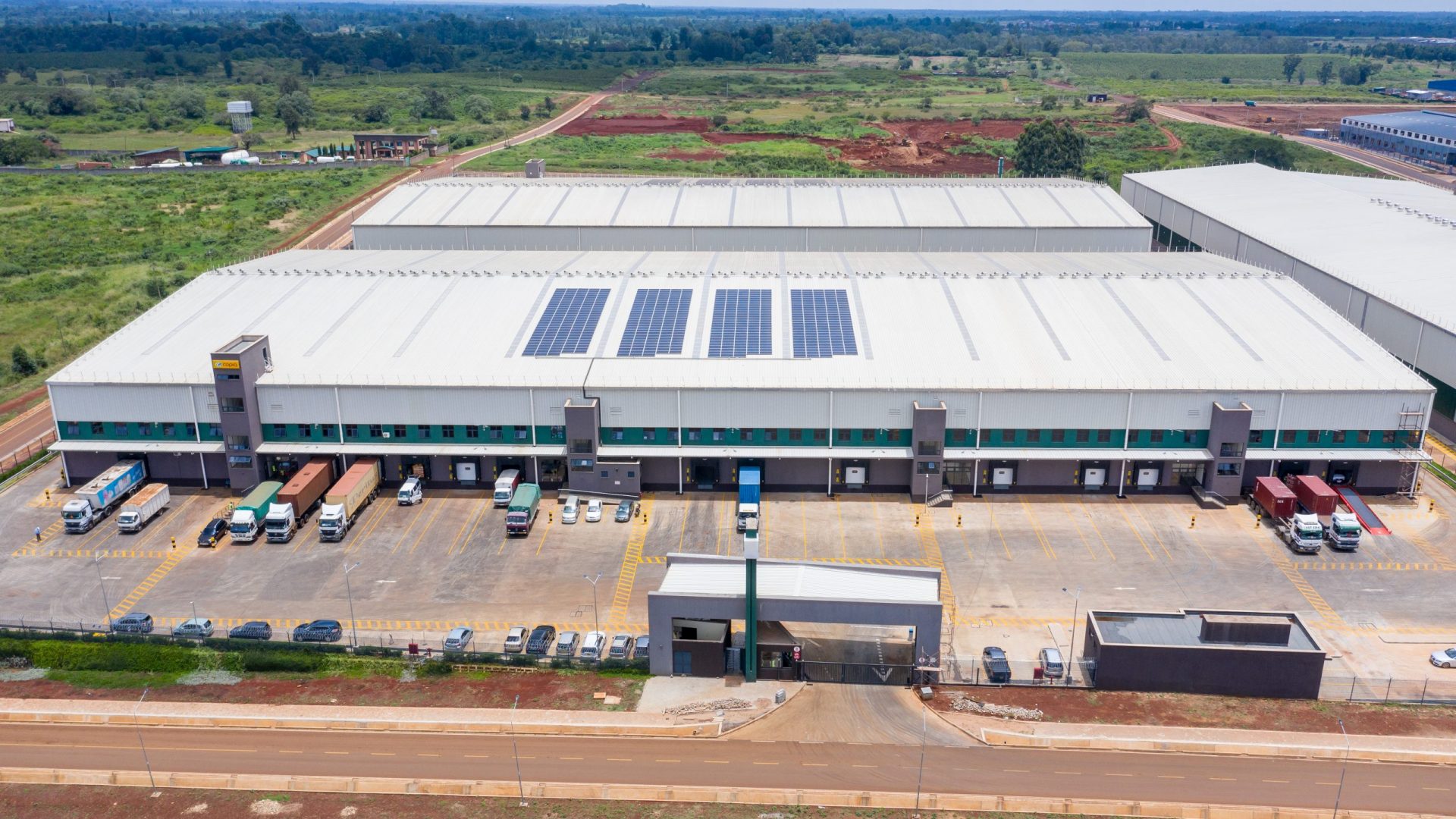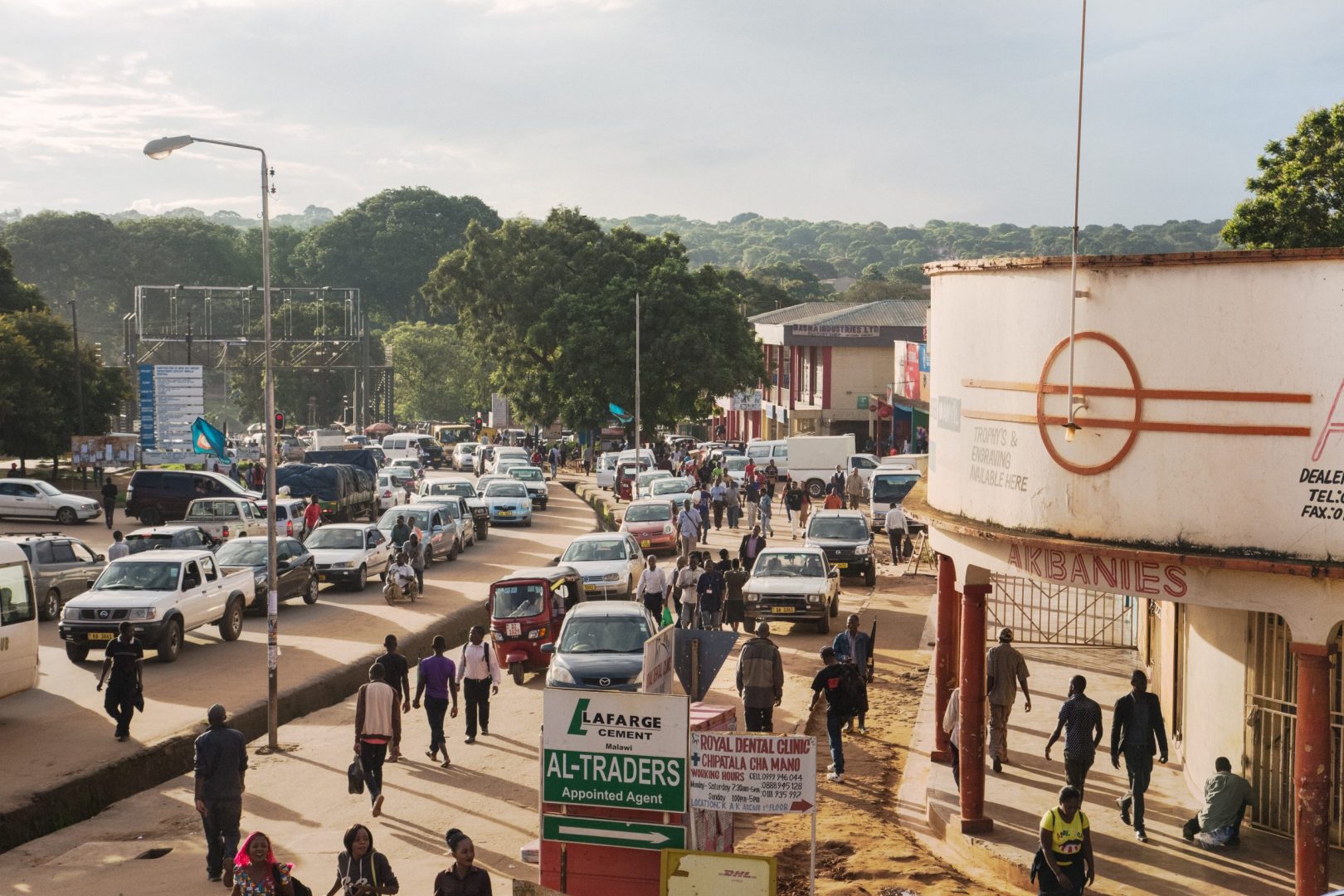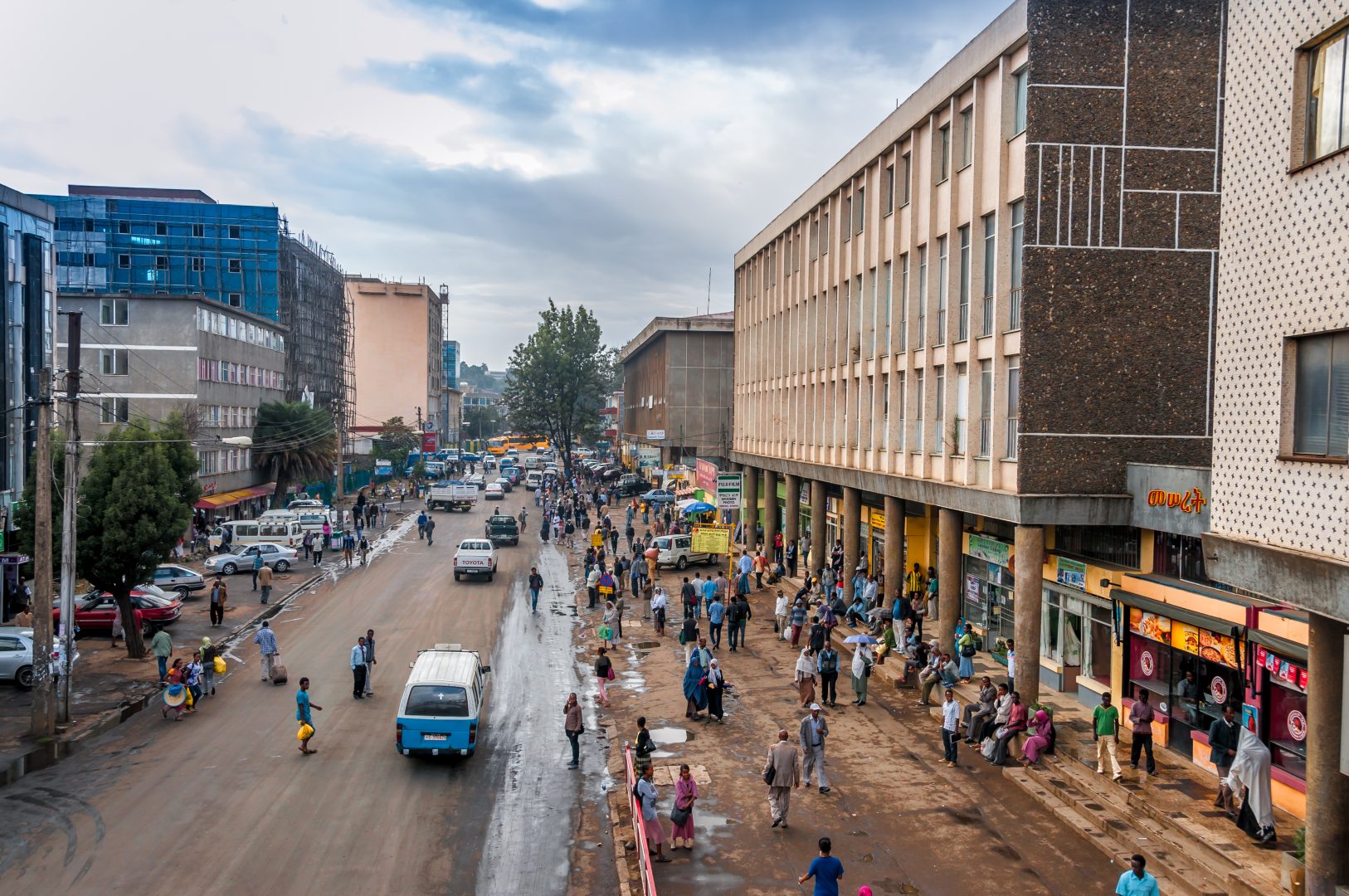1. Introduction
Introduction by Amal-Lee Amin, Managing Director, Climate, Gender and Advisory.
This article provides an in-depth summary of our Emerging Economies Climate Report 2022 – you can read the full version here.
The climate emergency is having a significant impact on communities all around the world, especially those living in Africa and Asia. A recent report from the UN’s Intergovernmental Panel on Climate Change (IPCC) said that 40 per cent of the world’s population is now ‘highly vulnerable’ and predicts that future climate risks are even more severe than previously thought.
It is clear we need urgent climate action. Incremental improvements in sustainability will not get us to net-zero and resilient economies. The focus must now be on embracing emerging climate-friendly technologies, and embedding reduced emissions and increased climate resilience into business models and behaviours across all sectors. More financial support has been pledged to help make this a reality. At COP26 in Glasgow, the Climate Finance Delivery Plan was published, which sets out how developed countries will achieve the target of mobilising $100 billion per year to enable developing nations to address the crisis and adapt to its impacts. The UK is playing its part too – it is providing £11.6 billion in climate finance up until the end of 2026.
In the markets where we invest in Africa and Asia, there are huge opportunities to use climate finance for green economic transformation. From clean energy and mobility solutions, to green buildings and new adaptation and resilience technologies, there is huge potential to address the climate crisis in a way that delivers prosperity and supports a just transition to a new, green economy.
Last year, we launched our Emerging Economies Climate Report to try to understand the extent to which the climate emergency is affecting companies, how they are responding and what more can be done to support them as we move to a greener future. We surveyed senior executives working across our portfolio of companies and funds in Africa and Asia. Questions in the survey were structured around the pillars of the Task Force on Climate-related Financial Disclosures (TCFD), which provides an international framework to help businesses disclose climate-related risks and opportunities. We found that nearly half of the participants had already experienced an extreme weather event that affected their business, 86 per cent thought that climate change would negatively impact their firms in the decade to come and 94 per cent thought the international community has a duty to support emerging economies respond to climate change.
A year is a long (and critical) time in the climate crisis. Since we published our 2021 report, the scale, urgency and complexity of the challenge have become clearer, as have the tools we need to rise to meet it. So, 12 months on, what has changed for the companies and funds in our portfolio?
The results of this year’s research are covered in this report. They show how climate change is becoming an increasingly significant concern for businesses and investors in Africa and Asia, the difficult decisions it is presenting firms and what they need to effectively tackle the crisis:
- 68 per cent of respondents said climate change is affecting their business today.
- Over half of respondents have experienced an extreme weather event (58 per cent) – up from 48 per cent from last year.
- 40 per cent of respondents have been impacted by flooding, while 25 per cent have been affected by drought.
- More than half (56 per cent) thought climate change will affect the viability of their business in the next five years, while 72 per cent were concerned that climate change will impact plans to grow their business or investment portfolio over the next ten years.
- 91 per cent agreed to some extent that organisations that take steps to reduce their carbon emissions and reduce vulnerability to physical climate change risks will be more successful in the long-term – up from 82 per cent last year.
- In comparison to last year, the number of respondents adapting their strategy or financial planning in response to climate change increased from 69 per cent to 73 per cent.
- Nearly half of respondents (48 per cent) are introducing new green or climate-friendly products.
- 92 per cent agreed that better and more targeted investment is needed to reduce emissions and vulnerability.
- Respondents were largely optimistic that COP27 will have a material impact on how countries address climate change.
2. How is climate change affecting businesses in emerging economies?
Put simply: climate change is already affecting businesses and firms’ lived experiences of climate change appear to be getting worse.
68 per cent said that climate change is impacting them today, while the number of survey participants who have experienced a physical climate change event affecting their business rose from 48 per cent last year to 58 per cent this year (see chart below).
This second statistic is particularly significant as it means more respondents have now been affected by a climate event than have not. We will continue to monitor this trend in future and may see it increase further still. This is because, as we see more climate-attributed extreme weather events, participants will possibly ‘feel’ affected by them even if the impact is indirect.
68%
of respondents said climate change is affecting their business today.
58%
said they have experienced a physical climate event.
Experiences of extreme weather events
Participants’ responses to the question: ‘Have you experienced an extreme weather event?’
Year
Percentage
2021 (yes)
48%
2022 (yes)
58%
What types of physical climate events are affecting businesses?
The most frequently reported physical climate event was flooding, where 40 per cent of respondents said they have been affected by it (see chart below). There was a relatively broad split of companies that have experienced flooding, ranging from electric utilities firms, to agricultural companies, banks and real estate businesses.
When we look at a regional breakdown of how all physical climate events reported have affected respondents in Africa and Asia (see chart below), a similar picture emerges with flooding being the most significant (39 per cent of all physical events in Africa and 45 per cent in Asia).
“Drought is the big threat to crops for us. Capital is required to adapt to climate change to avoid the longer-term financial impact.”
Judith Munyurwa, Zebu Investments, pan-Africa
Physical climate events affecting businesses
Participants’ responses to the question: ‘What extreme weather event(s) have you been affected by?’
Type of physical climate event
Percentage
Flooding
40%
Drought
25%
Extreme heat
13%
Coastal flooding
9%
Storm
6%
Extreme wind
5%
Wildfire
4%
Other
7%
‘What extreme weather event(s) have you been affected by?’ Africa-based respondents only
Type of physical climate event
Percentage
Flooding (rainfall/river)
39%
Flooding (coastal)
6%
Drought
23%
Extreme wind
3%
Wildfire
7%
Extreme heat
18%
Other
3%
‘What extreme weather event(s) have you been affected by?’ Asia-based respondents only
Type of physical climate event
Percentage
Flooding (rainfall/river)
45%
Flooding (coastal)
13%
Drought
15%
Extreme wind
2%
Storm
13%
Extreme heat
6%
Other
6%
Concerns about physical and transition risks
In our 2021 report, 65 per cent of respondents agreed to some extent that they were concerned about the risks associated with a low-carbon transition, and 86 per cent agreed to some extent that they were concerned about the risks associated with physical climate change.
This year, to explore these responses a little deeper, we asked how concerned respondents were about these risks on a scale of 1 to 10. A score of 1 was ‘not concerned’, 5 was ‘somewhat concerned’, and 10 was ‘extremely concerned’. 70 per cent ranked their concern of physical risks as a 5 or higher, while 66 per cent ranked their concern of transition risks as 5 or higher.
While the change in the wording of the question means we cannot draw comparisons on the absolute change between 2021 and 2022, we can look at concern about physical and transition risks relative to one another (see chart below). While there appeared to be significantly more concern about physical risks in 2021 than transition risks, this has narrowed significantly and now respondents are only slightly more concerned about physical compared to transition risks.
70%
said they are at least somewhat concerned about physical risks related to climate change.
66%
said they are at least somewhat concerned about risks associated with a transition to a low-carbon economy.
Concerns of physical and transition risks in 2021 and 2022
2021: Percentage of participants that agreed that their organisation is concerned with the physical and/or transition risks associated with climate change
A low carbon transition
65%
Physical climate change
86%
2022: Percentage of participants that ranked their concern of physical and transition risks as a 5 or higher
A low carbon transition
66%
Physical climate change
70%
The impact of climate change on business growth and viability
For our 2021 report, we asked respondents whether climate change would affect plans to grow their businesses over the next 10 years. 86 per cent agreed, to some extent, that it would.
This year, the scale of the question was expanded to capture just how much participants felt their business’ growth would be impacted (see chart below). Overall, 82 per cent ranked their concern above a 5, meaning they are at least somewhat concerned. 21 per cent gave a score between 8 and 10, showing they feel that climate change will substantially impact their businesses growth.
While 82 per cent were concerned about climate change’s impact on their plans to grow their businesses, more than half (56 per cent) expressed concern that their firms would be viable at all (see chart below).
The impact of climate change on business growth and viability
Participants' responses to the question: ‘On a on a scale of 1 to 10, how much do you think climate change will impact your plans to grow your business (or investment portfolio) over the next 10 years?’
Ranking
Percentage
0 to 2
9%
3 to 4
9%
5
13%
6 to 7
48%
8 to 10
21%
'On a scale of 1 to 10, how concerned are you that climate change will affect the viability of your business over the next 5 years?’
Ranking
Percentage
0 to 2
23%
3 to 4
21%
5
21%
6 to 7
19%
8 to 10
16%
3. How are businesses in emerging economies responding to climate change?
There is clearly a belief among respondents that those who can decarbonise and build resilience to physical climate change are more likely to be successful. 91 per cent agreed to some extent with this statement, up from 82 per cent last year (see chart below).
Naomi Kioi of Sun King explains how the cimpany is adapting its offering in response to climate change
Will climate-conscious companies be more successful in the long-run?
2021: Participants’ responses to: ‘I believe that those organisations that take steps to reduce their carbon emissions and reduce vulnerability to physical climate change risks will be more successful in the long term’
View
Percentage
Strongly disagree
1%
Disagree
5%
Neutral
12%
Agree
47%
Strongly agree
35%
2022: ‘I believe that those organisations that take steps to reduce their carbon emissions and reduce vulnerability to physical climate change risks will be more successful in the long term’
View
Percentage
Strongly disagree
1%
Disagree
1%
Neutral
7%
Agree
41%
Strongly agree
49%
The impact of climate change on strategy and financial planning
There is also a clear desire to adapt to climate change. In comparison to last year, the number of respondents whose strategy or financial planning was affected by climate change increased from 69 per cent to 73 per cent.
We split up last year’s question to ask two separate questions this year and found that climate change was more likely to affect strategy (69 per cent) than financial planning (52 per cent). This is logical, as it is likely that organisations first adopt a strategy before incorporating climate change information into financial metrics.
Strategy
We found that there are substantial differences in how organisations are adapting their strategies to respond to climate change (see chart below). The most common approach is offering products and services that have less impact on the climate. On the other hand, organisations are also reducing investments in products and services with a greater negative impact on the planet.
Lok Capital, an investment firm based in India, is launching a new $200 million fund targeting climate investments. Vikram Dileepan, Principal at Lok, said their strategy is focused on adaptation and resilience solutions, as well as emissions reductions.
“We are primarily trying to go at it through investing in renewable energy technology enablers, not necessarily infrastructure platforms. So, we are looking at technologies which enable efficiency or productivity of these.”
Vikram Dileepan, Lok Capital, India
Vikram Dileepan of Lok Capital discuss the firm's new climate-focused fund
Financial planning
Physical and transition risks are also feeding into businesses’ financial planning (see chart below). For example, 36 per cent of respondents said that climate change had affected their access to capital. The survey responses also demonstrated that capital expenditure is key to allowing organisations to adapt and that leading firms are doing this already – with 35 per cent saying climate change had affected their capital expenditure decisions. These organisations are making capital expenditure decisions to improve resilience to physical climate change events, as well as helping to transition to a low-carbon economy.
As an example, two of the agricultural firms interviewed – Zebu Investments and Sahel Capital – had made capital expenditure investments to adapt to climate change. Zebu Investments has built two dams to allow them to irrigate crops to counter lower maize yields due to worsening drought in Cameroon, and Sahel Capital, a fund manager that operates across sub-Saharan Africa, has invested in a flood defence system to adapt to climate risk.
Impact of climate change on strategy and financial planning
Participants’ responses to the question: ‘How has climate risk influenced your organisation’s strategy?’
Area
Percentage
Offering of green products
48%
Excluding certain investment types
47%
Stakeholder engagement
41%
Targeting new markets
32%
Investment in research and development
27%
Changed investment strategy
25%
Changes in supply chain management
21%
‘How has climate risk influenced your organisation’s planning?'
Area
Percentage
Access to capital
36%
Capital expenditure
35%
Choice of acquisition and divestments
33%
Revenues
27%
Increased operational expense costs
19%
Assets
15%
Liabilities
10%
Decreased operational expense costs
7%
Provisions of general reserves (financial services firms only)
5%
Claim reserves (financial services only)
5%
Assessing and managing climate risk
There was an increase in those organisations introducing initiatives to make them less vulnerable to the physical risks associated with climate change, with 47 per cent saying they are doing this, up from 39 per cent last year.
The survey also explored how companies are assessing and managing both physical and transition climate-related risks. In terms of physical risks, primarily companies are integrating climate change into their general risk management process and using this system to assess and manage climate risks. In terms of transition risks, energy security was a significant issue among respondents, and this explains the large percentage of respondents that are investing in renewables (48 per cent) and adopting energy-efficiency measures (41 per cent). We also found that a large proportion, 46 per cent, said that they are reducing the carbon footprint of their products and services.
Are businesses assessing and managing physical climate risk?
2021: Participants’ responses to the question: ‘Is your organisation introducing initiatives to your business to make it less vulnerable to the physical risks associated with climate change?’
Response
Percentage
Yes
39%
No
33%
Planning to
27%
2022: ‘Is your organisation introducing initiatives to your business to make it less vulnerable to the physical risks associated with climate change?’
Response
Percentage
Yes
47%
No
41%
Planning to
12%
Metrics and targets
We also asked respondents about some of the metrics and targets that they have put in place to respond to climate risks.
There has been a moderate increase in the number of respondents calculating their carbon footprint (38 per cent this year, up from 33 per cent last year), and a similar increase in respondents planning to do so (34 per cent up from 29 per cent). There has also been a small increase in the number of respondents who have set a greenhouse gas reduction target (13 per cent this year, up from 11 per cent last year).
4. What do businesses in emerging economies need to effectively tackle climate change?
People living in emerging economies are among the most vulnerable to the effects of climate change but are the least responsible for causing it. And it’s clear from our research that respondents want more support in helping address the challenges that the changing climate brings with it.
Respondents overwhelmingly agreed (92 per cent) that better investment is needed to help businesses in emerging economies improve resilience to physical climate change and transition to a low-carbon economy.
“British International Investment could help in not just promoting climate actions but in helping implement them in practice, with no ‘one-size-fits-all’ approach.”
Oladele Shekete, Sahel Capital, pan-Africa
92%
agreed that better investment is needed to help businesses improve resilience to physical climate change and transition to a low-carbon economy.
Looking ahead
With COP27 taking place in Egypt this year, respondents were asked to rank on a scale of 1 (strongly disagree) to 5 (strongly agree) how optimistic they are about the material impact the conference will have. They were generally optimistic that it could have a positive impact on how the country they operate in responds to climate change, with 58 per cent agreeing or strongly agreeing.
However, they were less positive that the world could come together to effectively limit its effects – 46 per cent said they were at least somewhat optimistic, down from 49 per cent in 2021 (see chart below). Note that in this year’s survey, participants were asked to rank their responses to this question between 1 (very pessimistic) and 10 (very optimistic).
Can the world come together to effectively tackle climate change?
2021: Participants’ responses to whether the world will come together effectively to tackle climate change
View
Percentage
Very pessimistic
6%
Somewhat pessimistic
30%
Neither pessimistic nor optimistic
15%
Somewhat optimistic
37%
Very optimistic
12%
2022: Participants’ to whether the world will come together effectively to tackle climate change
Ranking
Percentage
0 to 2
15%
3 to 4
22%
5
18%
6 to 7
34%
8 to 10
12%
5. Conclusion
This research, and the comparisons with our findings from last year, demonstrate the significant impact the climate crisis is having on businesses, the ways companies are stepping up their responses and what they need to help them navigate the challenges it brings.
We can see respondents have reported more lived experiences of climate change, reflected in the increase in the underlying number of people who’ve been affected by extreme weather events, and the increase in concerns about transition risks.
As business leaders gain a clearer picture of the financial risk of the climate crisis, it is resulting in positive action. For example, we saw an increase in the number of companies adapting their financial strategy or planning because of climate change – nearly half of respondents reported that they are offering new climate-friendly products and a similar number are excluding investments that have a negative impact on the planet. We also found increases in the number of businesses taking steps to reduce their vulnerability to the physical effects of climate change, as well as calculating their carbon footprints and setting greenhouse gas emissions targets.
The findings of this research provide guidance on how the positive work already underway can be supported, and how we can accelerate action to meet net-zero by 2050. For investors like us, there are three key takeaways from this research that can inform our climate-focused approach:
- Respondents are looking for capital expenditures to build adaptive capacity and minimise physical climate impacts.
- There is a demand for financial assistance with a transition to low-carbon energy sources, as this also improves energy security.
- Businesses want education and training on the likely impacts of climate change and how they can be mitigated.
We will continue to monitor the views of the companies we invest in, so that our approach supports economic transformation, and a just transition to net-zero and resilient economies, in the best way possible.
About this research
This research was carried out by Anthesis Group on behalf of British International Investment. The questions were designed to compare with our Emerging Economies Climate Report 2021 to gauge sentiment changes from last year. In addition, more detail was asked of respondents relating to specific climate change attributed events in an attempt to capture the lived experience of climate change for business leaders in emerging economies.
We received a total of 85 responses to the survey. 62 of the firms that responded operate in Africa and 31 in Asia. Nine businesses are counted in both of these numbers, as they have operations in both regions.
You can read and download the full report here.











